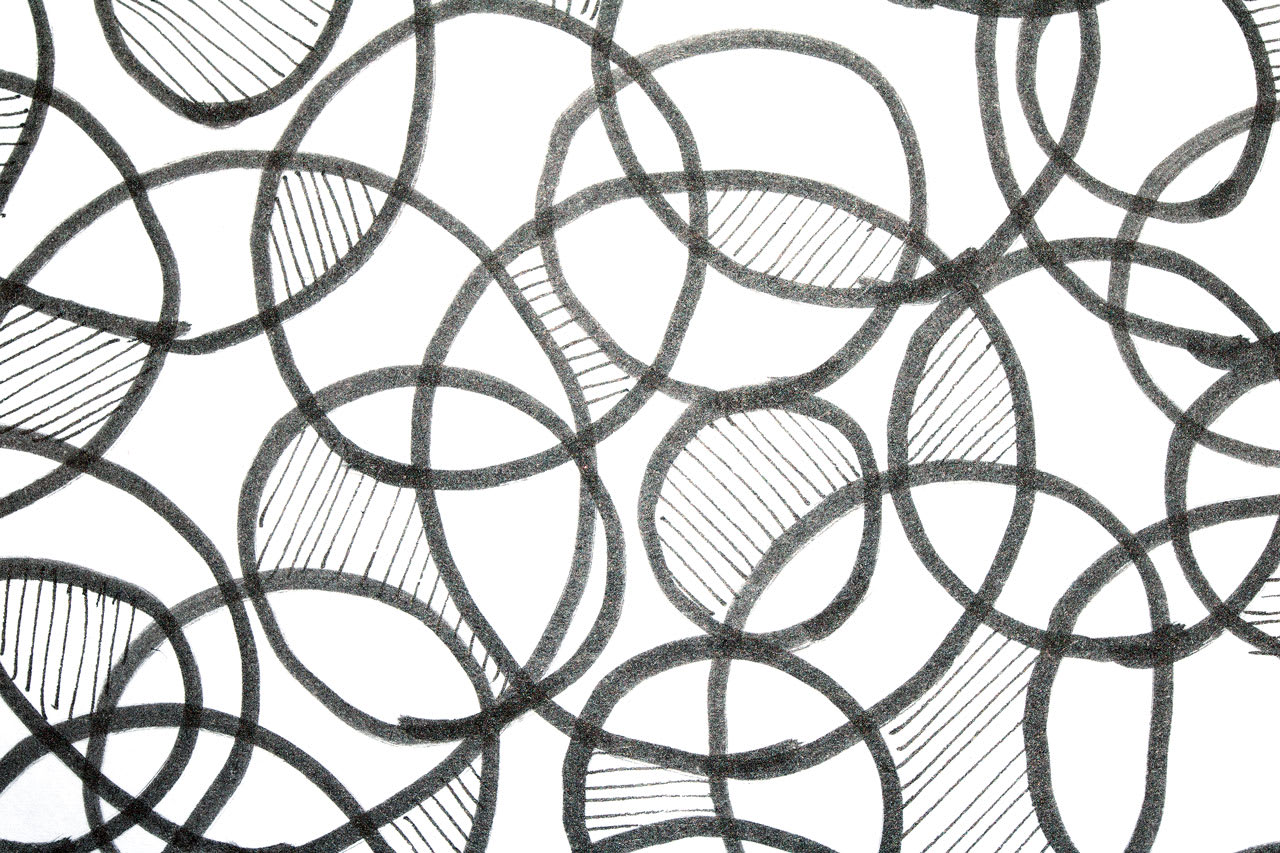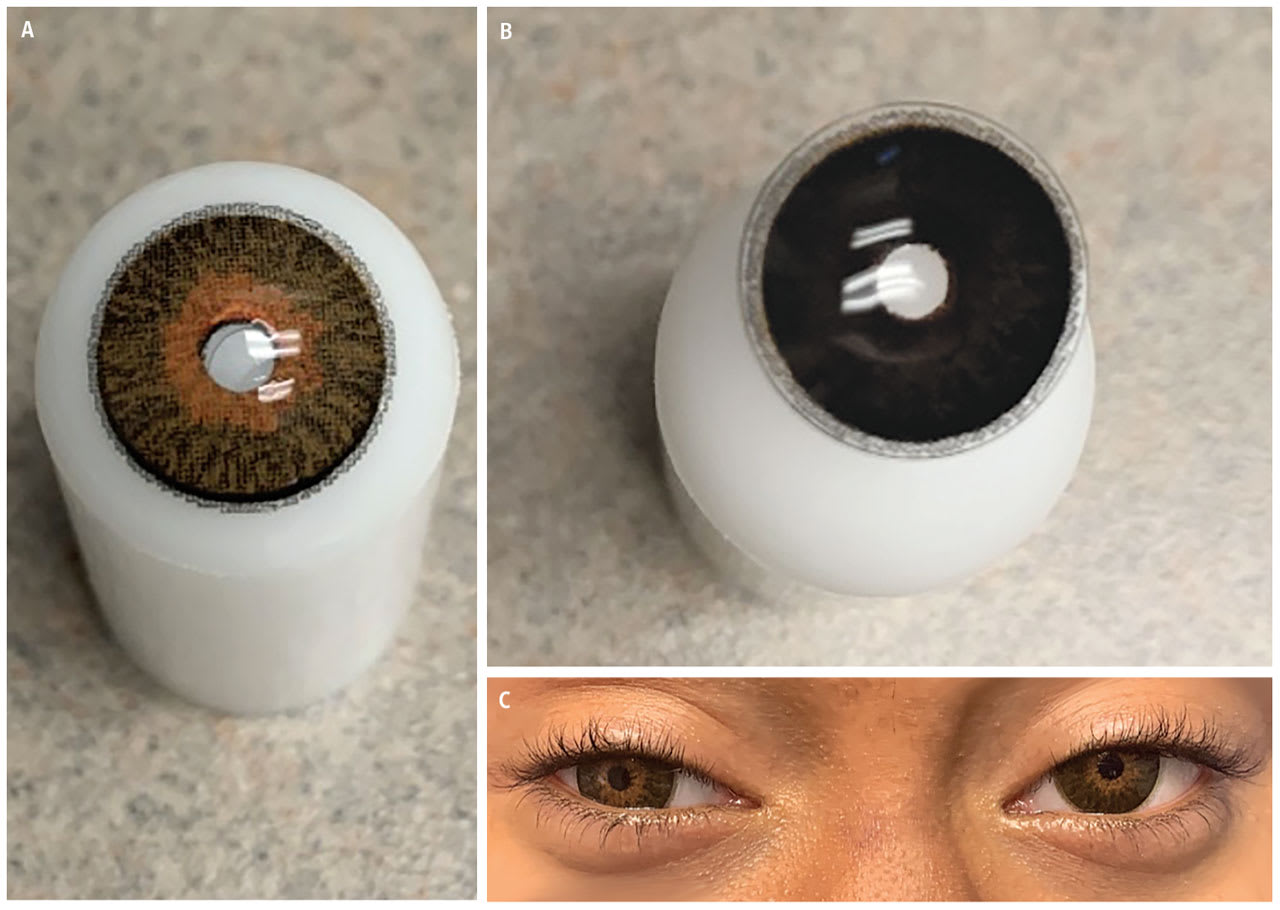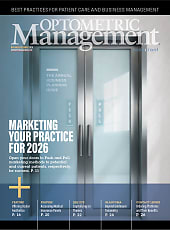IN ADDITION TO TYPICAL refractive correction and myopia management, contact lenses are essential for managing a range of other ocular conditions in children. All the traditional contact lens care and concerns apply, but there are additional considerations for specialty lenses in pediatric care.

Children can present with unique challenges due to anatomical differences, limited communication skills, and difficulties with compliance and handling. Especially in the pediatric population, contact lens use should be considered when the anticipated visual and developmental benefits clearly outweigh the risks and the learning curve.
Early vision treatment is critical, as the visual system is developing to its fullest potential in the early years of a child’s life.Though contact lens use has been associated with serious complications such as microbial keratitis, children can safely and successfully wear contact lenses with proper training, handling, and care.1 When fitted and managed properly, contact lenses can significantly improve vision as well as support a child’s overall developmental needs.
Children may benefit from specialty lenses to treat a variety of medical or refractive conditions that cannot be adequately managed with glasses or standard soft contact lenses. Some indications commonly managed using specialty contact lenses include:
• Aphakia: after congenital cataract extraction or traumatic cataract extraction
• Irregular cornea: irregular astigmatism, corneal scarring, or anatomical disruption from trauma or ectasias
• Iris anomaly: photophobia due to iris defects like aniridia or iris transillumination defects
• Ocular surface disease: significant, recalcitrant dryness secondary to diseases like Stevens-Johnson syndrome, ocular graft-versus-host disease, or exposure keratopathy
•High ametropia or anisometropia: when glasses are poorly tolerated or induce aniseikonia
Many of the same specialty lens designs worn by adults can be adapted for pediatric use with appropriate modifications in lens diameter, power, and fit based on the child’s visual needs. One specific lens type historically prescribed for infants who have aphakia is a silicone elastomer lens that is effective for this patient population due to its high oxygen permeability and availability in high-plus powers ranging from +7.00 D to +35.00 D and lens diameters between 11.3 mm and 12.5 mm.
The high oxygen permeability is essential for maintaining corneal health, and this lens is approved for up to 30 days of extended wear between removals for cleaning and disinfecting. Clinicians may prescribe narrower wear schedules based on their clinical judgement. It is important to note that with any amount of continuous wear, parents must be vigilant to watch the lenses/eyes for adverse events like infection or inflammation. Other lens options may be more appealing for long-term care.
A study evaluating daily wear silicone hydrogel lenses in pediatric aphakic patients who previously wore extended wear silicone elastomer lenses found comparable visual outcomes and improved comfort.2 Custom silicone hydrogel lenses can be considered as a less expensive, daily replacement alternative to silicone elastomer lenses; however, soft lenses can be more difficult for parents to handle than rigid lenses.
Rigid corneal lenses are an excellent option for patients of all ages due to the customizability of lens parameters and ease of application and removal by parents.3,4 GP lenses that have high oxygen permeability and UV protection can provide the high-plus powers needed to correct aphakia. Additionally, GP materials are associated with a lower frequency of microbial keratitis than daily wear soft lenses, and an even lower frequency than soft extended wear lenses.5
In addition to rigid corneal lenses and silicone elastomer lenses, other specialty lens options commonly used by adult patients, like hybrid and scleral lenses, can be used in a pediatric population. For example, using a soft lens with customizable iris colors and sizes can greatly improve the vision and quality of life for a child who has aniridia. Scleral lenses offer options for irregular corneas and ocular surface disease in children.
While there is much evidence to support the safety and efficacy of contact lens use in pediatric patients, success depends on addressing a unique set of challenges particular to this population. Anatomical considerations, and the apprehension they may create, may be the foremost barrier to overcome. Smaller palpebral apertures and tighter eyelids can make fitting and training physically tricky. The idea of placing a seemingly large lens on a small eye can be daunting, even for experienced clinicians and contact lens-wearing parents.
To address this, dedicating specific clinic sessions to pediatric contact lens fitting and training can be valuable. Allocating extra time allows clinicians to carefully guide parents through the application and removal process and sets the expectation that confidence and competence may take several visits.
In addition to anatomical challenges, compliance with wear and care routines may be limited by the child’s developmental stage and abilities. This is especially important when the child is away from the parent during the day, while in school or a childcare facility.
Young children may not fully understand the importance of avoiding eye rubbing or may not know what to do if the lens becomes uncomfortable or displaced. As a result, parents must be continually monitoring lens wear at home, including checking to ensure that the lens is still in place and being on the lookout for signs of irritation or complications.
Effective pediatric contact lens care can be optimized by proactive and thoughtful best practices.
Early Referral and Collaboration: Establish a referral pathway by partnering with ophthalmologists and optometrists. You can increase your professional network by attending society meetings, presenting at a continuing education event, or directly reaching out to discuss opportunities to comanage patients needing specialty contact lenses. Keep communication with referring providers strong and timely when comanaging to share both significant and routine updates.
Comprehensive Training for Parents: This may be the key component in a child’s long-term success using specialty lenses. Prioritize hands-on education with parents that is supported by dedicated clinic time and resources. Schedule this for the end of your clinic session (before lunch or before the end of the day) to avoid the pressure to rush off to another waiting patient.
In-person training should be supplemented with accessible training materials. Traditional lengthy printed handouts are often overlooked and not usable, especially for someone who is learning something new. Invest time in creating a simple infographic, photo guide, or short tutorial video that parents can preview before their child’s first visit and revisit afterward to reinforce learning and improve retention.
Access to Materials: As these specialty lenses may be underutilized or less familiar to insurance providers, families may require help in navigating approval and reimbursement. Providing letters of medical necessity tailored to the child’s diagnosis can help strengthen insurance claims and increase the likelihood of coverage.
A valuable next step is to leverage staff support to follow up on approval success rates and identify the most accepted documentation strategies. Over time, clinics can build a working library of templates customized to specific indications or insurers to make future submissions more efficient. Maintaining direct communication with contact lens manufacturers facilitates timely access to lenses and ensures that patients can receive any applicable warranties and take advantage of replacement programs.
Telehealth Follow-Up: Schedule phone check-ins within the first few days after lens dispensing. During these follow-ups, clinic staff can walk through a standardized checklist or questionnaire to reinforce care instructions, assess the child’s comfort with the lenses, and identify any issues that may warrant earlier in-person follow-up. Provide parents with clear options to reach you or the clinic for questions or concerns between in-person visits to promptly triage potential issues.
Here are case examples highlighting the diverse uses of specialty contact lenses in the pediatric population.
Case 1: Aphakia
A 12-month-old girl presented for evaluation and management of bilateral aphakia following congenital cataract extraction performed at 6 months of age. Her family had recently moved from outside of the country and was transferring care. At presentation, she was wearing high-plus spectacles but did not tolerate them well. She frequently removed the glasses due to poor fit and lack of a head strap. She was mobile but not yet walking, and her parents expressed concern about her visual engagement.
Cycloplegic refraction showed +22.00 D in both eyes. On examination she exhibited a large esotropia when uncorrected, with latency in fixation responses. Given her poor compliance with spectacles and the high refractive error, she was fit with +33.00 D silicone elastomer contact lenses in both eyes, which accounted for vertexing and added power for near visual demand; individuals who have aphakia cannot accommodate.
At follow-up, she demonstrated a response to Teller Acuity cards, and her parents reported much better cooperation and visual behavior with the contact lenses compared to glasses.
Case 2: Aniridia
A 16-year-old boy who had a history of congenital aniridia presented for evaluation for options to manage his photophobia. He was using glasses with photochromic lenses but preferred to wear plano wraparound sunglasses when outdoors due to his significant light sensitivity.
Manifest refraction revealed:
OD: +5.00 –2.00 x 180
OS: +4.50 –2.50 x 180
Best-corrected visual acuity with spectacles measured 20/200 in the right eye and 20/250 in the left eye. To address both functional and cosmetic needs, custom soft contact lenses were ordered with a printed iris, 3 mm pupil aperture, and an opaque backing to reduce light scatter and mitigate photophobia (Figure 1).

At follow-up, the patient reported significant improvement in visual comfort both indoors and outdoors. His best-corrected visual acuity improved to 20/70 in the right eye and 20/80 in the left eye with the custom lenses.
Case 3: Ocular Graft-Versus-Host Disease
An 11-year-old boy presented with a history of chronic ocular graft-versus-host disease following an allogeneic bone marrow transplant for leukemia at age 9. He reported ongoing symptoms of severe dry eye and redness, and his treatment regimen included preservative-free artificial tears every 2 hours, topical cyclosporine, and punctal plugs. His ocular symptoms were impacting his quality of life, extending to his academic performance and social development.
On examination, he exhibited significant conjunctival injection, minimal tear meniscus, and diffuse punctate epithelial erosions in both eyes. Schirmer testing without anesthesia was < 3 mm in both eyes. Best-corrected visual acuity with glasses was 20/80 in the right eye and 20/60 in the left eye. Given the extent of ocular surface disease and reduced quality of life, a large-diameter scleral lens was fitted to provide a constant fluid reservoir, improve visual acuity, and relieve his discomfort.
After initial fitting, the patient achieved 9 hours of comfortable daily wear time. At follow-up, he reported his symptoms had improved significantly, resulting in more tolerance for school tasks and being outdoors. His best-corrected visual acuity improved to 20/25 in both eyes with the scleral lenses in place.
Clinicians who embrace the nuances of pediatric fitting and invest in thoughtful education and care coordination can play a pivotal role in shaping a child’s lifelong relationship with vision. Each patient’s journey is unique and requires longitudinal relationships that adapt with the child’s growth, refractive changes, ocular health, and social development. While challenges remain, they are increasingly manageable with the right tools, time, and team-based support. As clinicians build confidence in the utility of specialty contact lenses, we can truly optimize care to meet the complex needs of our young patients.
References
1. de Zárate BR, Tejedor J. Current concepts in the management of amblyopia. Clin Ophthalmol. 2007 Dec;1(4):403-414.
2. Shaikh N, Stec M, Bohnsack BL. Soft contact lens options in the management of pediatric aphakia - A quantitative and qualitative assessment. Cont Lens Anterior Eye. 2023 Oct;46(5):101874. doi: 10.1016/j.clae.2023.101874
3. Amos CF, Lambert SR, Ward MA. Rigid Gas Permeable Contact Lens Correction of Aphakia Following Congenital Cataract Removal During Infancy. J Pediatr Ophthalmol Strabismus. 1992;29:243-245. doi: 10.3928/0191-3913-19920701-13
4. Saltarelli DP. Hyper Oxygen-Permeable Rigid Contact Lenses as an Alternative for the Treatment of Pediatric Aphakia. Eye Contact Lens. 2008;34:84-93. doi: 10.1097/ICL.0b013e31811eadaa
5. Cheng KH, Leung SL, Hoekman HW, et al. Incidence of contact-lens-associated microbial keratitis and its related morbidity. Lancet. 1999;354(9174):181-185. doi: 10.1016/S0140-6736(98)09385-4
6. Russell B, DuBois L, Lynn M, Ward MA, Lambert SR. The Infant Aphakia Treatment Study Contact Lens Experience: One-Year Outcomes. Eye Contact Lens. 2012;38(4):234-239. doi: 10.1097/ICL.0b013e3182562dc0
7. Cromelin CH, Drews-Botsch C, Russell B, Lambert SR. Association of Contact Lens Adherence With Visual Outcome in the Infant Aphakia Treatment Study. JAMA Ophthalmol. 2018 Feb 8; 136(3):279-285. doi: 10.1001/jamaophthalmol.2017.6691
8. McClatchey SK, McClatchey TS, Cotsonis G, Nizam A, Lambert SR. Refractive growth variability in the Infant Aphakia Treatment Study. J Cataract Refract Surg. 2021 Apr;47(4):512-515. doi: 10.1097/j.jcrs.0000000000000482
9. Khan S, Kumar ND. A Systemic Guide for Management of Prosthetic Soft Contact Lenses. YMER. 2023;22:195-208. ymerdigital.com/uploads/YMER2202J3.pdf




